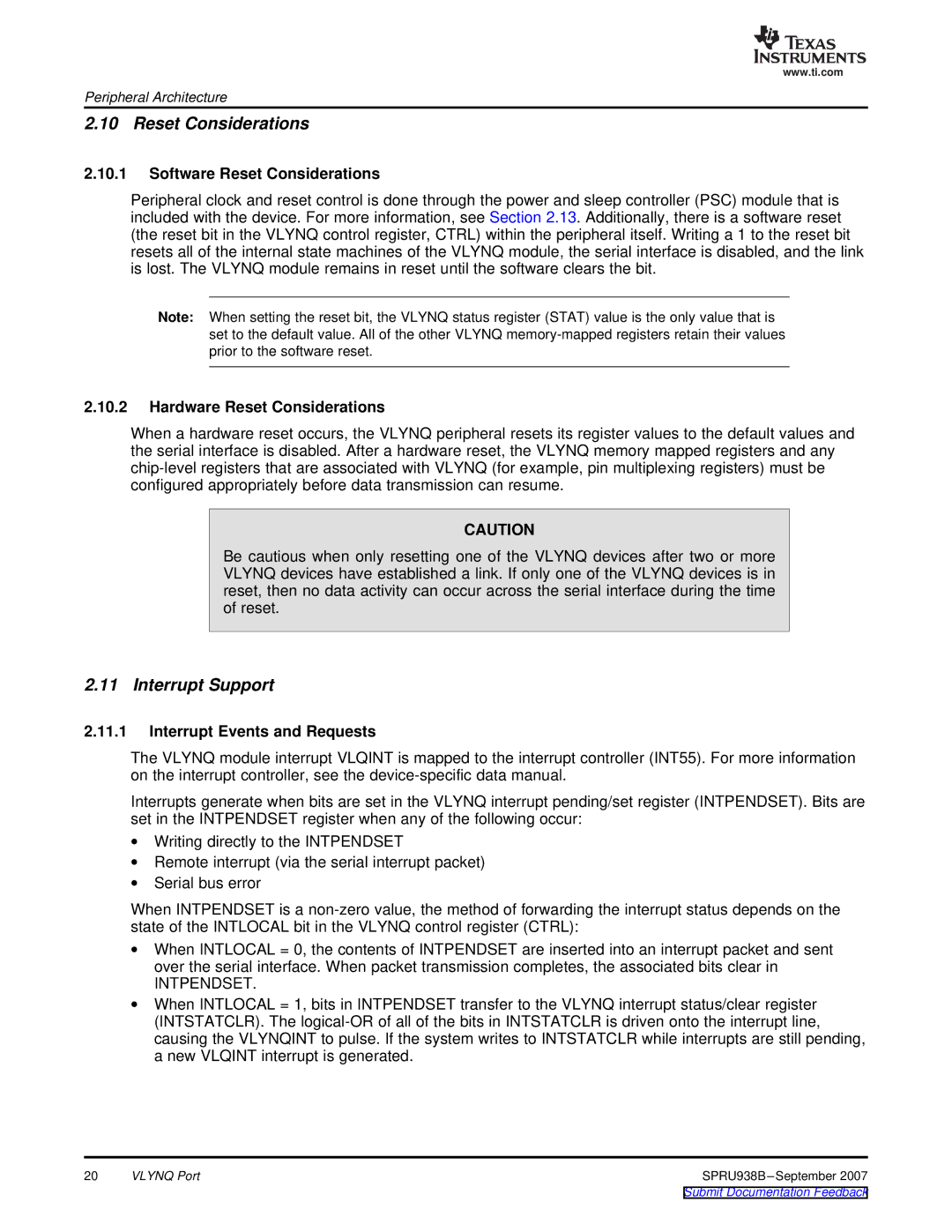
www.ti.com
Peripheral Architecture
2.10 Reset Considerations
2.10.1Software Reset Considerations
Peripheral clock and reset control is done through the power and sleep controller (PSC) module that is included with the device. For more information, see Section 2.13. Additionally, there is a software reset (the reset bit in the VLYNQ control register, CTRL) within the peripheral itself. Writing a 1 to the reset bit resets all of the internal state machines of the VLYNQ module, the serial interface is disabled, and the link is lost. The VLYNQ module remains in reset until the software clears the bit.
Note: When setting the reset bit, the VLYNQ status register (STAT) value is the only value that is set to the default value. All of the other VLYNQ
2.10.2Hardware Reset Considerations
When a hardware reset occurs, the VLYNQ peripheral resets its register values to the default values and the serial interface is disabled. After a hardware reset, the VLYNQ memory mapped registers and any
CAUTION
Be cautious when only resetting one of the VLYNQ devices after two or more VLYNQ devices have established a link. If only one of the VLYNQ devices is in reset, then no data activity can occur across the serial interface during the time of reset.
2.11 Interrupt Support
2.11.1Interrupt Events and Requests
The VLYNQ module interrupt VLQINT is mapped to the interrupt controller (INT55). For more information on the interrupt controller, see the
Interrupts generate when bits are set in the VLYNQ interrupt pending/set register (INTPENDSET). Bits are set in the INTPENDSET register when any of the following occur:
∙Writing directly to the INTPENDSET
∙Remote interrupt (via the serial interrupt packet)
∙Serial bus error
When INTPENDSET is a
∙When INTLOCAL = 0, the contents of INTPENDSET are inserted into an interrupt packet and sent over the serial interface. When packet transmission completes, the associated bits clear in
INTPENDSET.
∙When INTLOCAL = 1, bits in INTPENDSET transfer to the VLYNQ interrupt status/clear register (INTSTATCLR). The
20 | VLYNQ Port | SPRU938B |
